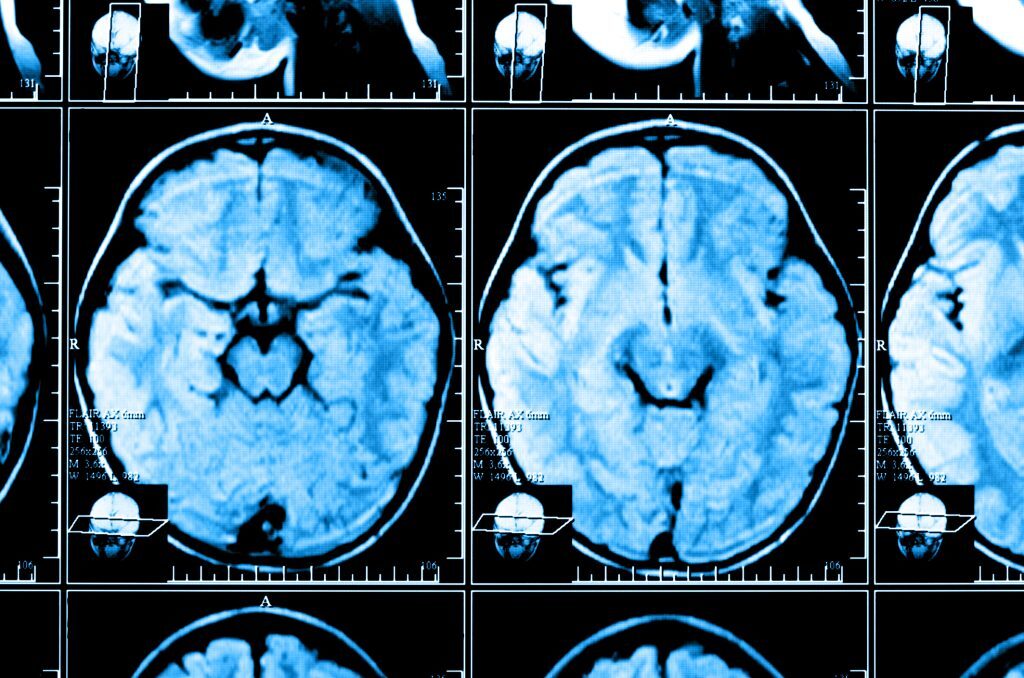A brain injury can occur from a medical condition such as a stroke or an aneurysm, but when a brain injury happens from outside forces, medical professionals describe it as a traumatic brain injury (TBI). The most common cause of traumatic brain injuries is blunt force trauma. Blunt force trauma refers to non-penetrating injuries, or injuries that don’t cut or puncture the skull as would a bullet, knife, or other sharp object. The brain is a mass of over 170,000 nerve cells, all playing critical roles in controlling the body and serving as the center of human cognition and emotion. When the head suffers a powerful blow, the blunt force trauma can cause the brain to bump or twist against the bony inside of the skull, resulting in a traumatic brain injury.

X-ray image of the brain computed tomography
In situations where someone sustains such an injury due to another party’s negligence, a Saint Louis brain injury lawyer can help victims understand their legal rights and pursue the compensation they may need for recovery.
What Types of Accidents Cause Blunt Force Trauma to the Head?
There are many ways that blunt force trauma can occur to the head. Head injuries happen to people of all ages; however, the elderly, children under the age of 4, and those between the ages of 15 and 24 experience traumatic brain injuries from blunt force trauma more than other age groups. The most common types of accidents that result in blunt force trauma to the head include the following:
- Car accidents
- Motorcycle accidents
- Pedestrian accidents
- Bicycle accidents
- Slip-and-fall accidents
- Falls from heights
- Workplace “struck-by” injuries, such as blows to the head from falling shelves, boxes, or equipment
- Contact sports injuries
- Recreational activity injuries, such as skating, skiing, diving, or horseback riding
- Criminal assaults and acts of violence
Blunt force head trauma can cause bleeding and inflammation inside the brain, resulting in a variety of traumatic brain injuries in a range of severity from mild concussions to life-threatening catastrophic injuries.
What Types of Brain Injuries are Caused by Blunt Force Head Trauma?
Despite the bony outer protection of the skull and a cushioning layer of protective fluid, the delicate nerve cells of the brain are vulnerable to damage and cell death from inflammation, bleeding, and pressure. Cell death causes dysfunction in the affected portion of the brain, with impacts on cognition, emotions, movement, balance, speech, and coordination. Widespread brain injuries result in coma, severe impairment, or death. Common traumatic brain injuries from blunt force trauma include the following:
- Concussions
- Contusions, or bruising on the brain
- Subdural hematoma, or blood pooling and clotting between the layers of tissue surrounding the brain
- Skull fractures
- Diffuse axonal injury, or injury caused by nerves torn or sheared away when the brain twists inside the skull from a forceful blow
- Coup contrecoup injury, or injuries to one side of the brain and the opposite side, due to the brain bumping forward and backward against the skull
Traumatic brain injuries can cause temporary or long-term adverse effects, requiring rehabilitative therapy as well as initial emergency medical treatment.
Symptoms of Traumatic Brain Injuries From Blunt Force Trauma
It’s crucial to seek medical treatment as soon as possible after suffering blunt force trauma to the head. While a powerful blow may cause immediate symptoms, such as unconsciousness, many types of brain injuries develop symptoms slowly during the hours and days after the blunt force trauma, as pressure, bleeding, and inflammation injure the brain. Symptoms include the following:
- Headache
- Dizziness
- Nausea and vomiting
- Blurred vision
- Problems with memory and concentration
- Balance and coordination problems
- Speech problems
- Changes in mood and personality
- Ringing in the ears
Developing any of the above symptoms after suffering blunt force trauma to the head could be a sign of a serious TBI, requiring immediate medical attention.

